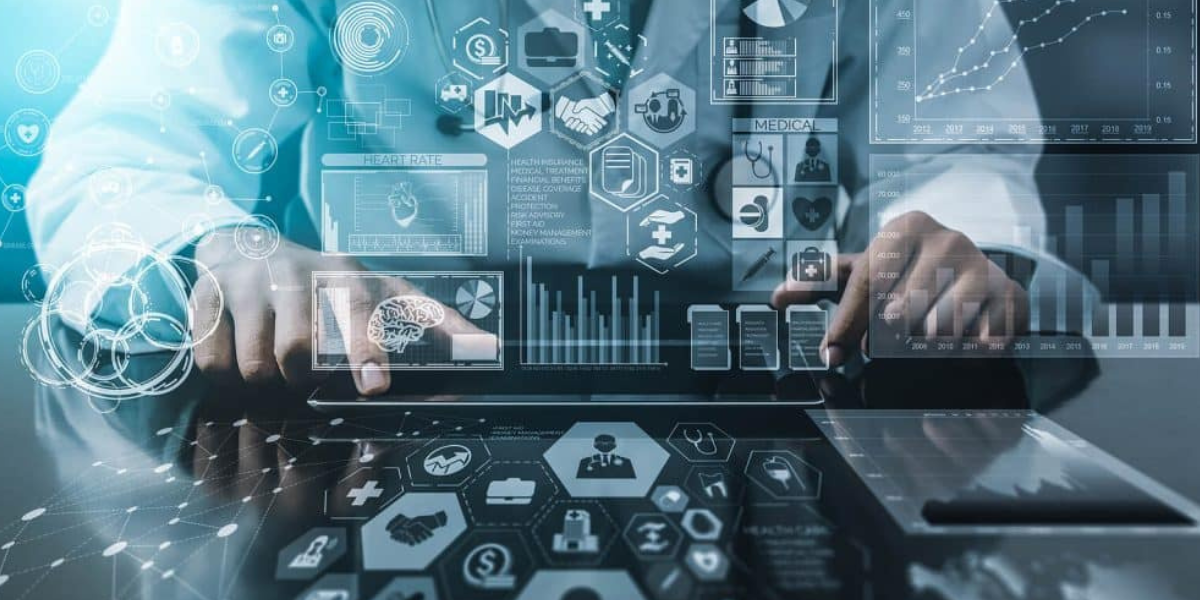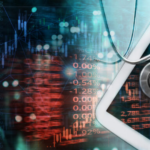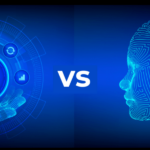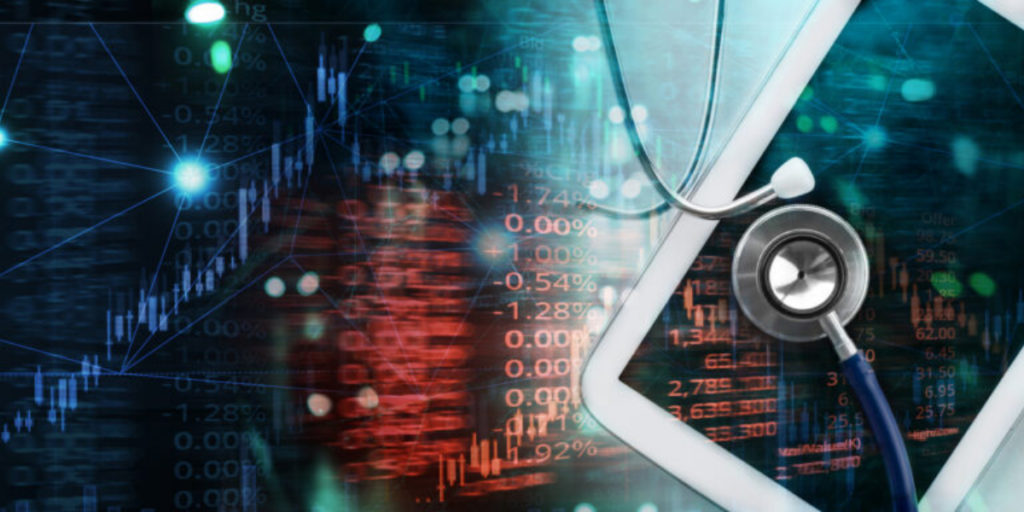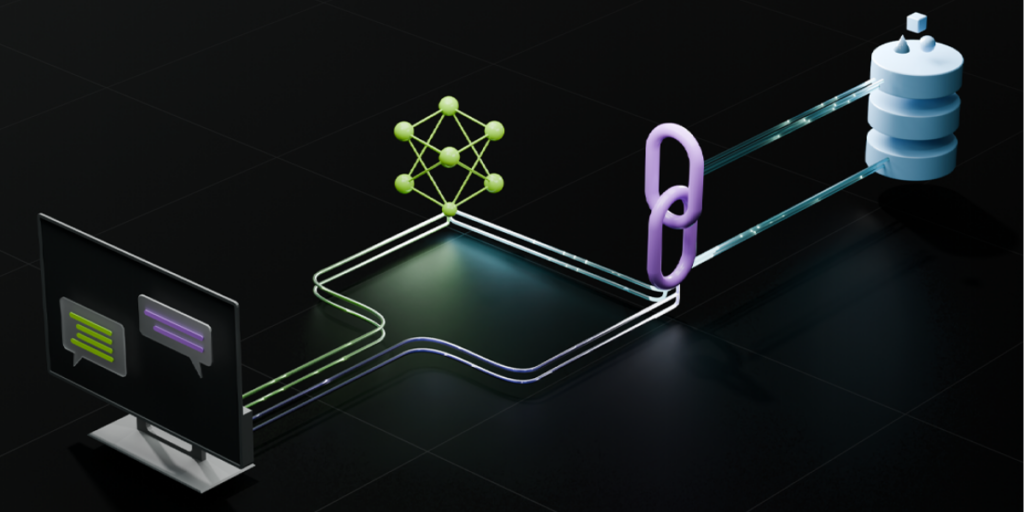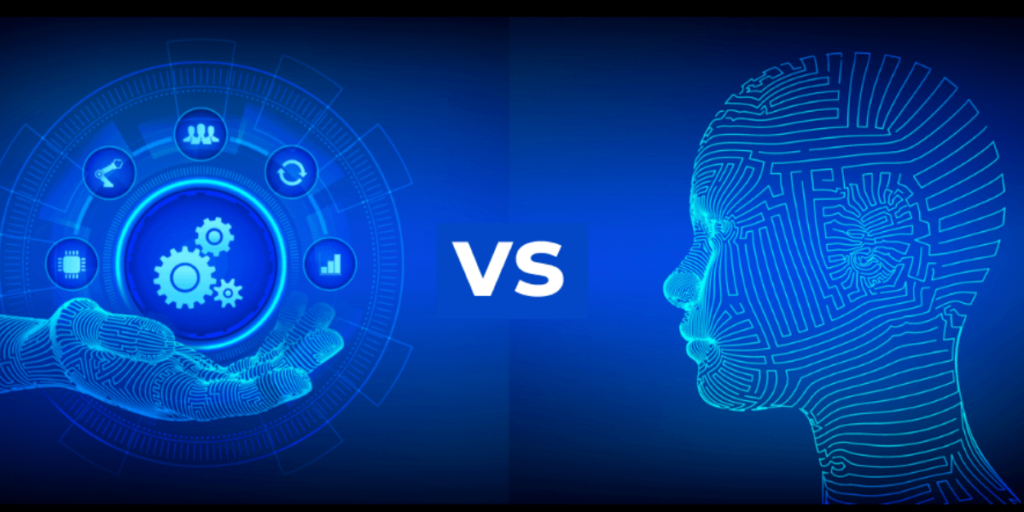Today, we live in the age of wireless networks and connections. One of the major changes that have transformed how we communicate and connect with the advent of Bluetooth. Today, in the medical field, Bluetooth Low Energy (BLE) has been growing in popularity. But what exactly is BLE? Contrary to the predecessor Classic Bluetooth, BLE is specifically designed to be used in applications that need minimal power consumption. It can be powered by a coin-cell battery for a long time. BLE is a vital component of technology today, offering an unbeatable connectivity to devices in diverse industries like healthcare.
The value of BLE for modern-day technology can’t be understated. Its energy-efficient and cost-effectiveness make it a great solution for numerous applications, including the field of medical devices and patient care. With the ability to transmit data in real- time, BLE increases the effectiveness and reliability of medical equipment and ultimately improves the outcomes of patients.
In the field of IoT healthcare software solutions, in which various wireless technologies are used within medical equipment for a number of time, Bluetooth Low Energy has revolutionized wireless connectivity. As opposed to conventional Bluetooth, BLE consumes minimal battery power, while providing solid and reliable connectivity. This is why BLE is extremely useful in the healthcare field because of its effectiveness in reliability and cost-effectiveness.
In this post we’ll look at the benefits and main features of BLE technology for the healthcare industry.
Understanding Bluetooth Low Energy (BLE)
BLE is a wireless communications technology that is designed to allow short-range data transmission with low energy consumption. Its efficiency lets devices run for long periods of time on smaller batteries. It is perfect for use in areas in which power efficiency is a major factor, like medical devices and wearable technology.
The major distinctions that distinguish BLE from Classic Bluetooth lie in their energy consumption and data transfer speeds. In contrast, Classic Bluetooth is designed for constant data streaming with more power demands, BLE is optimized for frequent data transfers, with considerably less energy consumption. This is what creates BLE, ideal for devices that have to transmit smaller amounts of data regularly and not drain their energy sources too quickly.
The BLE technology BLE is a simpler protocol stack as compared to Classic Bluetooth, which reduces the complexity of BLE and also reduces power consumption. BLE runs in the 2.4 1GHz ISM band and has 40 channels, each with a frequency that is 2 MHz per. The system uses adaptive frequency hopping. This increases its sensitivity to interference and ensures stable communication in noisy situations.
The understanding of BLE and the technological foundation illustrates why it has been the foundational element in the design of new medical devices as well as healthcare systems for patients. Thanks to its lower power consumption along with its reliability, efficiency, and cost effectiveness, BLE is paving the path for the development of innovative solutions to healthcare.
Benefits Of BLE Technology For The Healthcare Industry
Although people often think of the human body and the mind as separate from the mechanical machinery of technology and science. Healthcare has been a constant adopter of the latest techniques. The trend of increasing acceptance of technology has continued since the first surgical instruments and prosthetic limbs, to the latest advancements in technology, such as heart pacemakers and wearable monitoring devices.
Beyond the gadgets and equipment, BLE also helps the health industry in a variety of ways.
Remote Monitoring Systems
BLE is a key component in monitoring remote patients. Through the integration of BLE into sensors and medical devices, patients are monitored at home and avoid the necessity to visit a hospital. They collect information, including blood pressure, oxygen levels, and ECG readings. These are then transmitted to healthcare professionals for analysis. Real-time data transmission facilitates timely medical intervention that improves patient outcomes and reduces healthcare costs.
Connected Medication
In hospitals, patients are typically linked to numerous devices for medical use. The elimination of wires offers important advantages like making it easier for staff to work and increase the patient’s comfort. ECG monitor and blood pressure sensors, may wirelessly send vital sign information to the central hospital monitoring system.
In a typical hospital, the nurse scans the barcode on a patient’s wrist with a handheld scanner that is light and connects to the patient’s infusion pump via Bluetooth to locate the patient. Infusion pumps can then give the needed medicines and fluids at a specific time to the patient under supervision by the central hospital monitoring system.
Connected Home-Health
By transferring important parts of patient care out of hospital wards to the house, The Internet of Things allows for substantial savings in costs, improved efficiency, and better patient comfort. The health of patients can be monitored regardless of the location they’re in.
Medical weight scales and blood pressure monitoring devices are all instruments that track health and notify patients, family members, and caregivers of the appearance of vital signs or the absence of medicines.
Bluetooth low-energy’s energy, durability and user-friendliness are ideal for connecting multiple monitors to a central hub like a phone that utilizes a longer-range communication technology for transmitting data to the web for care providers to analyze it securely. They are also able to operate for many years with one battery.
Smart Medical Equipment
Smart medical devices, including Infusion pumps, ventilators, and diagnostic instruments, use BLE to improve connectivity and performance. BLE allows these devices to connect with one another through central systems, which facilitates greater coordination and automatization within the healthcare setting. The interconnection ensures that the medical equipment operates smoothly, accurately, and reliably, contributing to better patient treatment.
Cost-Effectiveness
BLE technology is economical and, therefore, an appealing choice for medical equipment. Lower power requirements and a simple protocol stack can reduce the cost of manufacturing and allow healthcare facilities to use a variety of BLE-powered devices without incurring excessive costs. The cost efficiency extends to administration and maintenance of the devices, further increasing their appeal.
High Reliability and Accuracy
BLE is highly reliable and accurate, both of which are crucial for medical devices. The adaptive frequency-hopping technology eliminates interference by other wireless devices, which ensures steady and secure communications. The robust connectivity of BLE and its precise capability to transmit data makes it perfect for vital medical situations where accuracy and security are essential.
Features Of Bluetooth Low Energy Technology
In this section, we will discuss the key features of BLE technology. Let’s have a look:
Low Power Consumption
The BLE medical devices that BLE powers operate so that they consume the least amount of power. If an event occurs, the BLE device will wake up and then send a quick message to the smartphone computer, tablet, or smartphone. The rest of the time, the BLE device remains in sleeping mode. The energy consumed by BLE technology is one-tenth of the power used in Classic Bluetooth technology.
Secure, Reliable, and Robust
BLE technology uses adaptive frequency hopping (AFH) technology, similar to classic Bluetooth technology. It helps transmit robust messages between medical devices and smartphones or tablets. BLE Technology uses 40 2 wide channels at a frequency of MHz, while traditional Bluetooth technology utilizes wide channels that are 79 1MHz. This is one reason BLE technology can cut costs while using less energy.
Low Cost and Compatibility With Smaller Battery Devices
BLE-compatible devices work with traditional Bluetooth technology. They’re also efficient because of their lower usage features. They operate on dual-mode technology that includes traditional and low-energy Bluetooth functions. With a focus on low energy consumption, BLE technology has been designed to work with tiny battery gadgets and is proven to be extremely efficient in terms of cost.
GATT
GATT is the Generic Attribute Profile, a system used by Bluetooth Low Energy (BLE) to discover characteristics and services in the device. GATT is a way of defining data exchange using concepts such as characteristics and services. Service refers to data collection that relates behaviors to fulfill a particular purpose. Characteristics refer to several values used to describe service, configuration, and properties.
Easy To Integrate
BLE technology is built on the idea of a master and slave. The master can connect to multiple slaves, regulate how often the slave can communicate, and allow the slave to talk only when master instructions are given. This means that the master will be a Smartphone, Tablet, etc., while the slave is a tiny BLE-equipped device. With this simplicity of connectivity, using BLE technology in many medical and health-related apps is effortless.
Use Cases Of BLE Technology In Healthcare
Modern-day hospitals and clinics have expensive devices to manage patients suffering from various ailments. Furthermore, hiring and keeping medical personnel adds up to operating expenses. Suppose healthcare could utilize those personnel and resources more efficiently. In that case, the potential for cost savings is enormous, primarily by cutting the cost of routine jobs. That’s where BLE can be a valuable technology for this. We’ll look at some diverse applications of BLE in healthcare.
Monitoring Of Health At Home
The IoT makes it simpler than ever before to improve the patient care quality and lower costs for healthcare providers and patients. Medical devices like weight scales, and heart rate monitoring devices, can detect vital indicators, monitor health, and communicate important information to patients’ caregivers. BLE allows this to be done thanks to its low power and extended range capabilities.
For example, using Bluetooth’s long-range communications, the patient is able to connect a blood pressure monitor to their mobile phone. This safely transmits the data via web to their main care provider to be further analyzed. Patients are able to track their health without having to leave their homes. Monitoring health at home with BLE can make healthcare accessible and affordable for many individuals.
Vital Sign Monitoring
Wearable devices are used to monitor patients continuously in hospitals, tracking their vital indicators. In most cases, patients have their vital indicators assessed by a nurse prior to being seen by a doctor. Vital signs are referred to as vital because they affect clinical decision-making; however, these monitors are costly and can be inaccurate in some cases.
Methods of traditional vital sign monitoring, such as frequently taking one’s temperature by mouth, are inefficient and may be susceptible to errors made by hand. Continuous vital sign monitoring with wireless medical devices cuts costs. It allows medical personnel to provide superior-quality medical treatment to more patients.
Continuous monitoring of vital signs can be used in any hospital. Patients can keep track of their health from home and send their information securely to the doctor for further analysis. Another scenario involves providing care to patients in an ambulance on the journey to the hospital.
In this example, a BLE defibrillator could be utilized to transmit real-time data about the patient’s status to a device in the vehicle. Data can be transferred to the manufacturer’s cloud service so that doctors can immediately access this information and be more prepared to assist patients when they arrive in the ER.
Management Of Assets
Hospital equipment is costly and quickly vanishes. Research has found that hospitals purchase between 10% to 20% more equipment than they need due to staff difficulty finding and using it.
Asset tracking using BLE uses Bluetooth tags attached to infusion pumps, wheelchairs, mobile scanners, and various other essential equipment. It allows hospital personnel to find and follow equipment in real-time. If a doctor or nurse needs a particular piece of equipment, all they have to do is open an app specifically designed for the task and find out what equipment might be hidden.
Business-oriented, efficient Asset management tools aren’t just focused on the instantaneous. In addition, they convert every location information gathered into insightful reports that allow you to analyze equipment flow, identify inadequate or lost zones, and make the right decisions based on purchasing equipment and its placement data.
Monitoring Compliance And Recording
Hospitals are legally required to examine and record the medicines stored in their facilities each day. If medications are not properly stored, they may not function as they were designed, which could pose a risk to the patient’s health taking the medication. Data collection by hand is very long, and there is a risk of human errors.
IoT can solve this problem by automating the whole procedure. Bluetooth LE temperature tags installed in storage locations continuously monitor the area’s temperature and send temperature readings to the IoT platform in real time.
The data collected is safely saved in the platform and analyzed at any time. Specific platforms provide real-time alerts if measurements exceed or under the set parameters. They also offer preventive diagnostics that alert users of potential security breaches before they happen.
Automatic Entry And Access
It’s easy for people to forget the importance of security in adequately administrating a hospital. There’s always a variety of buildings, wings, and different amounts of access rights. Hospitals in sensitive locations can use beacons to control the entry process.
Instead of making keys that could be easily lost, they can use ID badges or physical checks that can be easy to manipulate. Bluetooth devices that are LE-compatible (like Card Tag) or wristbands permit managers to give particular access rights to each person. And the best part is that you don’t have to fret about missing tags or purchasing new ones each time you upgrade access privileges.
Blood Transport Tracking
Monitoring and keeping blood-related products correctly identified is difficult and costly. It is common for blood products to have very few limitations on how long they are allowed to be stored in specific locations and temperatures.
Effectively managing these devices will save you significant money while aiding patients. Bluetooth can help managers determine how long their products will be used and ensure they’re used correctly. The use case includes the identification of temperature as well as tracking location.
Environmental Monitoring
Beyond tracking for security reasons, you could need to track the conditions of your environment for different reasons. Examples include monitoring temperatures, humidity levels, or levels of light in public areas and in patients’ areas to guarantee that the environment is healthy and safe, provide a pleasant experience for visitors, and identify concerns that require the facility’s administrators’ focus.
Environmental information is gathered via sensors equipped with BLE beacons installed at places you’d like to keep track of. Current and historical readings, such as recording and tracking compliance instances, are readily available within the IoT platform. They can be analyzed and taken action. Predictive diagnostics and workflows help streamline the process further.
Post-Visit Care
Patients want to be in control of their information and choices. A study revealed that 80% of those diagnosed with illness quickly go online for solutions. Nowadays, people expect access to all kinds of data. They are interested in all information that could assist them with their healing.
Patients might even seek out additional details to help them comprehend how they behave and their lifestyle. This is why after-visit care is so critical. Suppose you automatically send them all the information specific to the visit and any other pertinent information to help them progress. In that case, the patients can experience more comfort, make decisions, and lead healthier lives.
Staff Safety
Several studies have demonstrated that nurses, and other staff members, tend to be victims of violence at workplaces more than other professionals in the field of service. Beacons may increase the chance for workers in these positions to seek help and can accelerate the process of getting help. It’s beneficial financially and could prevent physical injuries and keep employees at ease.
Quick Access To Your Nearest Doctor
When you need a doctor, most of the time, it’s urgent. Instead of calling a doctor on the opposite part of the building or searching for the closest aid, IoT helps locate the closest personnel quickly. You only need Bluetooth LE wristbands or cards that you distribute to staff members and an IoT platform to track their locations. When you want to find somebody, open the platform and indicate if you’re looking for a specific person or the nearest doctor. A live map can show the best way to get there.
Optimized Patient Flow
Nurses and doctors see a variety of patients every day. There is a ton of paperwork to track. This also means much back-and-forth. BLE sends important patient information to the physician as they walk into the room. It means that less time will be spent searching for files.
In addition, indoor navigation could aid patients in finding the correct space in the large area speedily or even help staff members find how to get there faster for the next appointment. Many patients are moving through hospitals; Bluetooth means all those moves can be optimized to improve efficiency and ease of use.
BLE and Real-Time Location Systems (RTLS) In Healthcare
The application of Bluetooth Low Energy (BLE), together with Real-Time Location Systems (RTLS), has transformed the healthcare industry, increasing efficiency while improving the patient experience. BLE RTLS makes use of the strength to the full potential of BLE technology to give exact, instant monitoring of staff, assets, and patients inside healthcare facilities. The integration permits seamless interaction between BLE tags and RTLS infrastructure to ensure that healthcare facilities have current location information.
The advantages of RTLS for clinics and hospitals have many benefits. With the use of BLE tags for asset monitoring, medical facilities can track the status and location of critical equipment. It decreases the time needed to search for tools and ensures that the essential devices are available whenever and where they’re needed—the increased efficiency results in better patient care and lower cost of operations. Furthermore, RTLS can track patients’ movements and locations and monitor wait time durations to improve patients’ safety and provide prompt medical intervention.
The examples of BLE-powered RTLS within medical facilities show the profound impact of this kind of technology. For example, BLE-enabled RTLS can identify the exact whereabouts of pumps for infusion so that they can be readily accessible in the case of an emergency. Additionally, monitoring patients with BLE tags may help prevent illegal exits and ensure that patients get the treatment they require quickly.
Challenges and Considerations
Although BLE development offers much potential in remote patient monitoring, several issues must be considered in order to achieve its full potential.
Data Security and Privacy
It is crucial to securely transmit sensitive medical information stored on BLE-enabled devices and applications. Secure security, robust encryption protocols, and compliance with health regulations like HIPAA are crucial to ensuring your privacy and security.
User Engagement and Adoption
Promoting user engagement and the acceptance of BLE-enabled remote monitoring systems among healthcare professionals is crucial to the success of these solutions. The user-friendly interface, intuitive design, customized features, and clearly describing the advantages of remote monitoring are crucial elements that influence the acceptance of users and this technology.
Interoperability and Integration
To ensure seamless interoperability and integration with existing healthcare systems, Electronic Health Records (EHRs), and medical devices is vital to implementing remote monitoring using BLE. The standardization of protocols, data formats, and communication interfaces is essential to enabling the exchange of data and ensuring interoperability among various operating systems and devices.
Regulatory Compliance
Compliance with regulations and standards that govern software, security, privacy, and data is crucial for the creation and use of remote monitoring applications based on BLE. Health organizations and app developers are required to adhere to relevant regulations and get the necessary approvals for the security, effectiveness, and legitimacy of their services and products.
Future Trends and Developments
Bluetooth Low Energy (BLE) continues to grow, and there are advances and new developments in the near future that are expected to revolutionize healthcare. As technology advances, BLE is expected to increase its importance in medical devices and patients’ care, leading to advancements in accuracy, efficiency, and overall delivery of healthcare.
Integrating BLE with the Internet of Medical Things (IoMT) is an exciting innovation. This integration will result in more outstanding interconnected health ecosystems where devices can communicate and exchange data, delivering complete patient health information. Furthermore, advances in sensors will improve devices’ capabilities with BLE connectivity, allowing for more accurate and varied health monitoring. As most IoMT devices are connected using streams, you must think about RTLS platforms that connect internally via streams.
Next, promising area is the application of BLE in telemedicine. As telehealth applications grow, BLE will play an important part in connecting patients to health professionals remotely. Wearable development with BLE connectivity and monitors for homes will allow instant data sharing, allowing healthcare professionals to observe patients’ health constantly and take timely actions.
Conclusion
Bluetooth Low Energy (BLE) has revolutionized healthcare by providing affordable, low-power, and extremely reliable medical equipment. In addition to real-time monitoring of patients, enhanced communication between doctors and patients, and efficient asset tracking, the effect of BLE on the medical field and patient care is significant.
As BLE technology evolves and improves, it will improve healthcare delivery and outcomes by introducing new technologies, such as interconnection with the Internet of Medical Things (IoMT) and telemedicine. The potential impact of BLE on healthcare technology and the patient experience is enormous, and it will open new avenues for more connected and effective healthcare systems.

